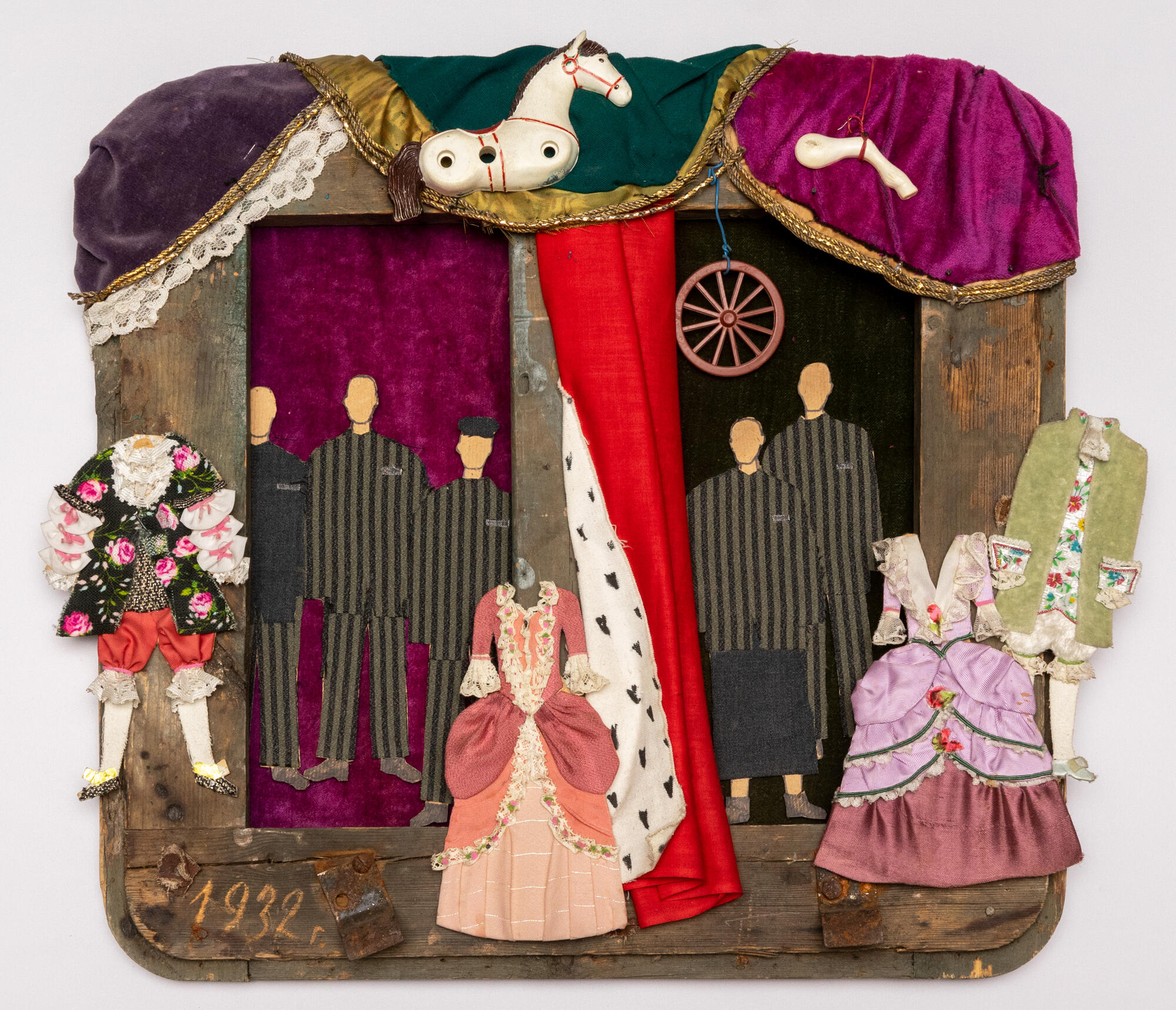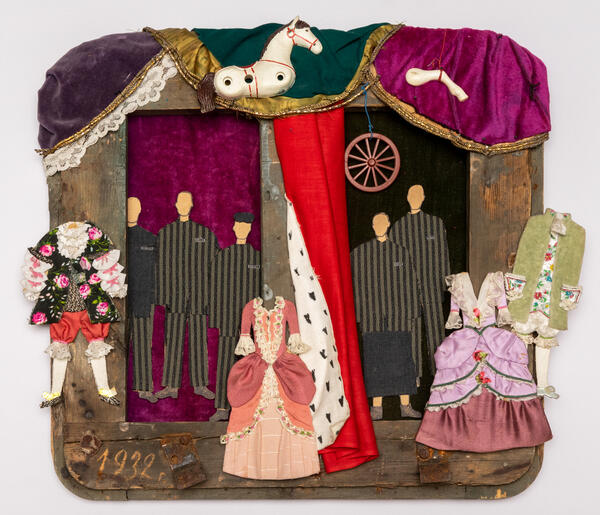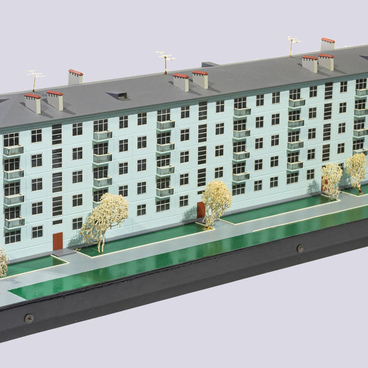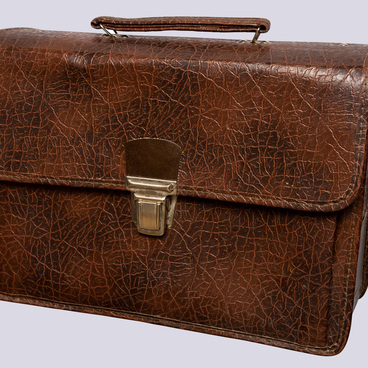The museum collection contains one of the sketches of the staff artist of the Severodvinsk Drama Theater Viktor Fesenko. The layout of the scenery was created for the play “Mad Jourdain” based on the play by Mikhail Bulgakov. This play is a revised adaptation of Jean-Baptiste Moliere’s ‘Bourgeois in the Nobility’. The plots as a whole coincide: this is a story about how a rich man, devoid of titles, tries in every possible way to become his own in the high society.
The main difference between Bulgakov’s play is the so-called “double play”, when the actors play not only the heroes of Moliere’s play, but also themselves in life. The writer wrote the work in 1932, but it was never staged. Firstly, the performance with acting tricks required complex technical equipment, and secondly, the work was so unusual that the directors had no idea how to work with it.
The director of the Severodvinsk City Drama Theater, Vladimir Tikhonravov, already in the 1980s looked at the work in his own way: in his production, the troupe was actually not Moliere’s, the rehearsal took place in the camp theater. There were all the prerequisites for such a decision: both the fact that Bulgakov wrote the play in the early 1930s, during the beginning of Stalin’s repressions, and the fact that it was staged in the late 1980s, when the topic of the innocents repressed arose on the wave of glasnost. In the decoration of the hall, symbolism is noticeable: the costumes of the main characters of the play are depicted against the background of five prisoners. In the upper part there is a top masking border in the form of three sets of colored fabric with fragments of images of a horse and a cart, as a symbol of the decay of the movement of time. In the middle there is a red cloth symbolizing Soviet power.
In the fall of 1989, the actors of the play were offered a play in several ways: the production mixed both Moliere’s comedy and the tragedy of Soviet history. The play became an important milestone in the history of the Severodvinsk Drama Theater, which in the 1980s was one of the strongest in the Arkhangelsk Region. But the audience received it ambiguously. Philosophical questions and many symbols made it difficult for an unprepared person to view.
The main difference between Bulgakov’s play is the so-called “double play”, when the actors play not only the heroes of Moliere’s play, but also themselves in life. The writer wrote the work in 1932, but it was never staged. Firstly, the performance with acting tricks required complex technical equipment, and secondly, the work was so unusual that the directors had no idea how to work with it.
The director of the Severodvinsk City Drama Theater, Vladimir Tikhonravov, already in the 1980s looked at the work in his own way: in his production, the troupe was actually not Moliere’s, the rehearsal took place in the camp theater. There were all the prerequisites for such a decision: both the fact that Bulgakov wrote the play in the early 1930s, during the beginning of Stalin’s repressions, and the fact that it was staged in the late 1980s, when the topic of the innocents repressed arose on the wave of glasnost. In the decoration of the hall, symbolism is noticeable: the costumes of the main characters of the play are depicted against the background of five prisoners. In the upper part there is a top masking border in the form of three sets of colored fabric with fragments of images of a horse and a cart, as a symbol of the decay of the movement of time. In the middle there is a red cloth symbolizing Soviet power.
In the fall of 1989, the actors of the play were offered a play in several ways: the production mixed both Moliere’s comedy and the tragedy of Soviet history. The play became an important milestone in the history of the Severodvinsk Drama Theater, which in the 1980s was one of the strongest in the Arkhangelsk Region. But the audience received it ambiguously. Philosophical questions and many symbols made it difficult for an unprepared person to view.



